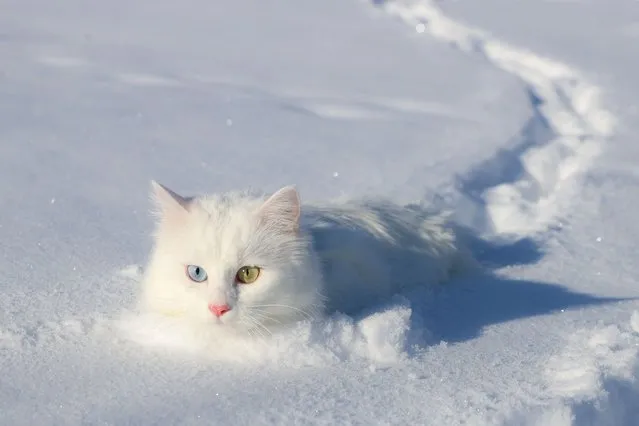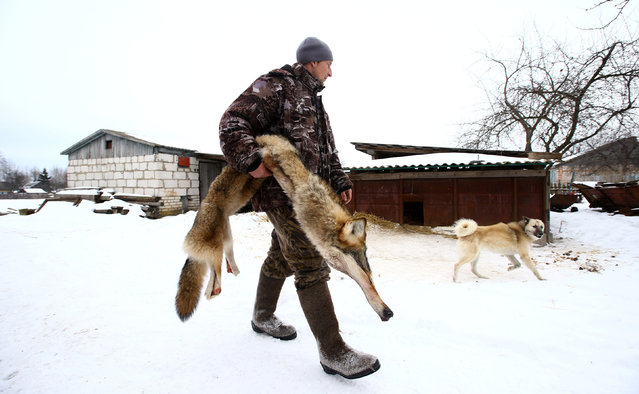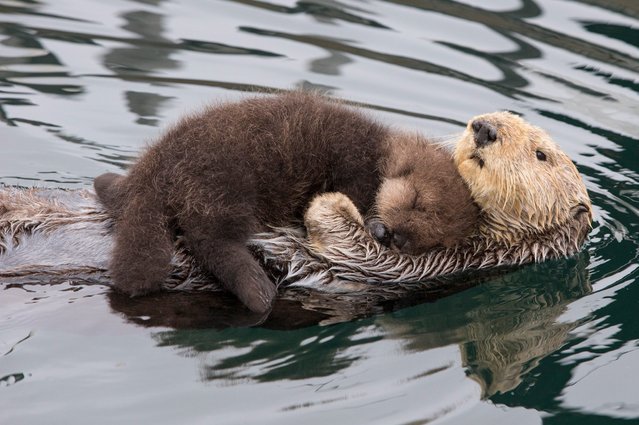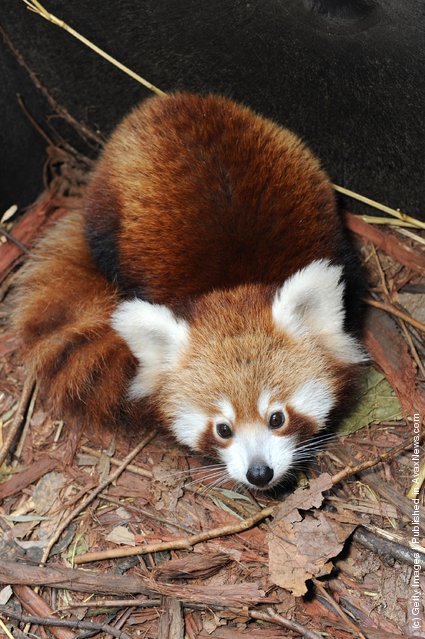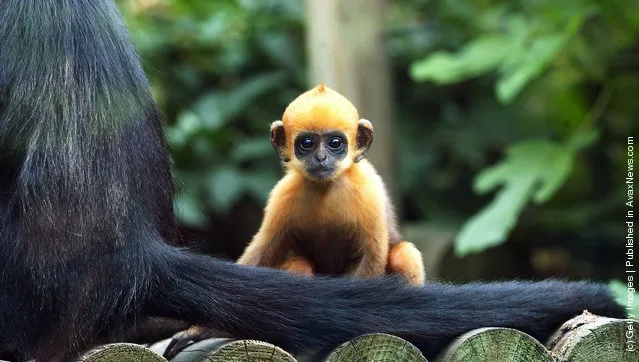
“Like most Brits, Emmie Stevens is dog mad. But the 25-year-old has taken it to the next level, spending £30,000 on her nine pets. Emmie’s dogs enjoy regular manicures and fur dyes and have their own walk in wardrobe to store their £15,000 clothing collection”. – Daily Record. Photo: Bailey the Staffordshire bull terrier, holding a red rose. (Photo by Helen Yates/Barcroft Media)
09 Mar 2014 04:45:00,post received
0 comments

